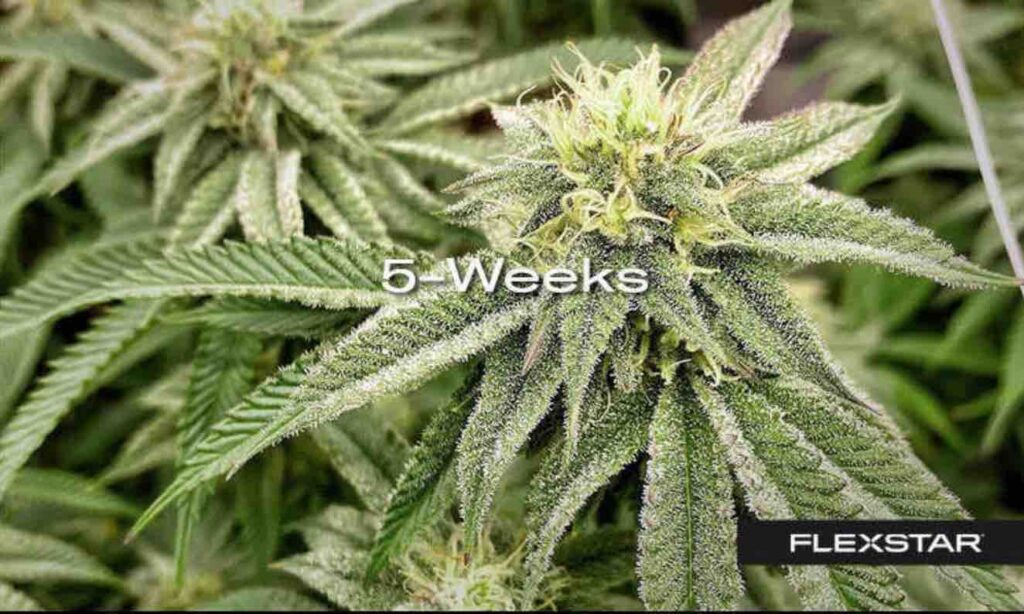Light is plants’ primary source of energy, pivoting their growth, development, and photosynthesis processes. Recognizing its significance, it becomes essential for gardeners to understand and measure light intensity accurately to ensure their plants thrive. Harvestic.com emerges as a vital resource in this journey, offering gardening enthusiasts the tools, knowledge, and support needed to refine their plant care techniques and optimize growth conditions.
Key Takeaway of this blog
Harnessing the right light intensity is fundamental to plant health and productivity. With the aid of PAR meters and informed adjustments to your lighting setup, achieving a garden that not only survives but thrives is within reach. Partner with Havestic to illuminate the path to your gardening success.
Understanding Light Intensity and Plant Growth
Light intensity directly influences the rate of photosynthesis, the foundational process through which plants convert light into the energy required for growth and development. An introduction to the concept of Photosynthetically Active Radiation (PAR) is crucial at this juncture. PAR represents the spectrum of light that plants can use, underscoring the importance of not just light quantity but its quality as well.
The Role of PAR in Plant Growth
Delving deeper into PAR reveals its spectrum range and its critical influence on different plant growth stages. The right amount and quality of light are essential for guiding plants through their life cycles—from vegetative growth to the flowering stage. This section highlights the necessity of understanding PAR values to provide your plants with the best possible light conditions, setting the foundation for healthy growth and abundant yields. Let’s pause here before we introduce PAR meters and their role in measuring light intensity around plants, alongside discussing the practical steps to utilize these tools effectively for gardening success.
Introducing PAR Meters
PAR meters are instrumental in quantifying light intensity in terms of Photosynthetically Active Radiation, offering a clear, numerical understanding of the light environment surrounding your plants. These devices can range from simple handheld units to more complex systems integrated with environmental controls. Choosing the right PAR meter depends on your gardening scope—from small indoor setups to expansive greenhouses—and your specific needs for precision and functionality.
How to Use a PAR Meter
Using a PAR meter effectively involves more than just taking readings; it’s about interpreting these measurements to make informed decisions on lighting adjustments. Here’s a step-by-step guide:
- Placement: Position the PAR meter at plant canopy level to get accurate readings of what your plants are receiving.
- Consistency: Take measurements at various points and times to understand the light distribution and daily intensity variations.
- Adjustments: Use the data to adjust your light sources, ensuring even coverage and optimal intensity across your garden.
Light Requirements for Different Plants
Plants have varied light needs, categorized into low, medium, and high light requirements. Understanding these needs is crucial in tailoring your garden’s lighting setup. PAR meter readings can guide you in ensuring each plant receives the right amount of light, whether it’s a shade-loving fern requiring minimal intensity or a sun-hungry tomato plant thriving under stronger rays. This examination of PAR meters and their application sets the stage for optimizing your lighting setup based on accurate light intensity measurements, ensuring your plants grow in an environment that closely mimics their natural conditions.
Adjusting Your Lighting Setup Based on PAR Readings
Armed with PAR meter readings, gardeners can fine-tune their lighting setups for maximum efficiency and plant health. Strategies include:
- Repositioning Lights: Adjust the height and angle of your grow lights to ensure even light distribution across all plants, according to the PAR data collected.
- Scheduling Light Cycles: Tailor your artificial lighting periods to mimic natural sunlight patterns, promoting healthier growth cycles.
- Optimizing Natural Light: Use readings to identify prime locations for plants near windows, and use reflective materials to enhance light availability.
Common Mistakes to Avoid
While measuring light intensity is critical for plant growth, certain pitfalls can lead to inaccurate readings or misguided adjustments:
- Incorrect Meter Placement: Always ensure the PAR meter is positioned at canopy level and in various spots to get a comprehensive understanding of light distribution.
- Ignoring Light Quality: While adjusting intensity is crucial, neglecting the spectrum of light can hinder plant development. Ensure your lights provide a balanced spectrum for all growth stages.
- Overcompensation: Sudden, significant increases in light intensity can stress plants. Gradually adjust light levels to prevent shock.
Supplementing Plant Growth with Artificial Lighting
When natural light falls short, especially in winter months or for indoor setups, supplementing with artificial grow lights becomes essential:
- Choosing the Right Grow Lights: LED and fluorescent lights are preferred for their efficiency and spectrum variety. Select lights that meet the PAR requirements of your specific plant collection.
- Positioning for Success: Use PAR readings to optimally position your artificial lights, ensuring all plants receive adequate intensity without risk of damage.
- Monitoring and Adjusting: Continuously monitor plant response to artificial lighting, using PAR meter feedback to make necessary adjustments.
Conclusion
Measuring light intensity through PAR meters is a game-changer in the quest for optimal plant growth. By understanding and adjusting to the specific light needs of your plants, you can significantly enhance their health and yield. Havestic.com remains committed to supporting gardeners through this process, offering the tools, resources, and expertise needed to navigate the complexities of light measurement and optimization.
Elevate your gardening game with the precision of PAR meters and the expertise of Havestic. Visit Havestic.com to explore our selection of PAR meters, grow lights, and other essential gardening tools. Reach out to us at sales@havestic.com for personalized advice and solutions tailored to your indoor gardening needs. Take the first step towards mastering light intensity for a thriving garden today.
FAQs
- What is the ideal PAR range for most indoor plants?
- The ideal PAR range varies, but most indoor plants thrive between 200 to 400 µmol/m²/s for vegetative growth and up to 600 µmol/m²/s for flowering.
- Can too much light harm my plants?
- Yes, excessive light can lead to light burn, causing leaf discoloration and damage. It’s crucial to adjust intensity based on PAR meter readings.
- How often should I check PAR levels?
- Regularly, especially after changing your lighting setup or when transitioning plants to different growth stages.
- Do all plants need the same amount of light?
- No, light requirements vary significantly among different plant species. Use PAR readings to cater to each plant’s specific needs.
- Can I use a PAR meter outdoors?
- Absolutely. PAR meters are valuable for outdoor gardens to ensure plants are positioned optimally for sunlight exposure.



